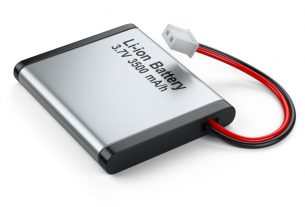Rapid prototype or rapid prototyping is a relatively new term and in its simplest form, the process of creating prototypes quickly to visually and functionally evaluate an engineering product design.
The term rapid prototyping (RP) refers to a class of technologies that can automatically construct physical models from computer-aided design (CAD) data. Rapid prototyping provides engineer, design and development teams with a distinct advantage such as: The ability to explore and realize concepts more quickly, thus making it easier to grasp the properties and design of a product.
Rapid prototyping services:
Rapid prototyping is a group of techniques used to quickly counterfeit a scale model of a physical part or assembly using three-dimensional computer-aided design data. Construction of the part or assembly is usually done using 3D printing or “additive layer manufacturing” technology.
Rapid prototyping (RP) includes different types of manufacturing technologies, although most utilize layered additive manufacturing. While additive manufacturing is the most common rapid prototyping services, other more conventional processes can also be used to create prototypes.
Advantages:
There are several advantages, one which includes being able to create a complete picture or a photography of how the product will exactly look like, And also how it will exactly perform early in the design and manufacturing cycle.
Rapid prototyping technologies:
Rapid prototyping technologies are known as the technology which is used to create a real scale model of an object in a short lead time, with the help of computer-aided design (CAD). They include 3D printing, subtractive manufacturing such as turning, milling, drilling and casting.
Types of rapid prototyping techniques
- Stereolithography (SLA)
- Selective laser sintering (SLS)
- Direct metal laser sintering(DMLS)
- Fused Deposition Modeling (FDM)
- Binder jetting.
- Poly jetting.
Stereolithography (SLA):
Stereolithography (SL) is one of several methods used to create 3D-printed objects. It’s the process by which a uniquely designed 3D printing machine, called a stereo lithograph apparatus (SLA) converts liquid plastic into solid objects.
Selective laser sintering (SLS):
Selective Laser Sintering (SLS) is a 3D Printing technology used for rapid prototyping and additive manufacturing of 3D parts with complex shapes and geometries. A wide range of part sizes is possible with SLS, with a choice of finishing and turnaround options available to suit most requirements.
Direct metal laser sintering (DMLS):
Direct metal laser sintering (DMLS) is an industrial 3D printing process that builds fully functional metal prototypes and production parts in 7 days or less. A range of metals produces final parts that can be used for end-use applications.
Fused Deposition Modeling (FDM):
Fused deposition modeling (FDM) is an additive manufacturing (AM) process in which a physical object is created directly from a computer-aided design (CAD) model using layer-by-layer deposition of a feedstock plastic filament material extruded through a nozzle.
Binder jetting:
Binder jetting is a 3D printing technology that combines principles of SLS and material jetting. BJ 3D printers make use of powders, which are bound together with liquid binder agents to make solid parts. The element of SLS that is visible in BJ is, of course, the use of powder.
Poly jetting:
Poly Jet is a powerful 3D printing technology that produces smooth, accurate parts, prototypes, and tooling. With microscopic layer resolution and accuracy down to 0.014 mm, it can produce thin walls and complex geometries using the widest range of materials available with any technology.




